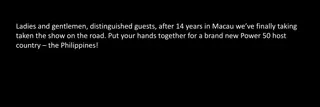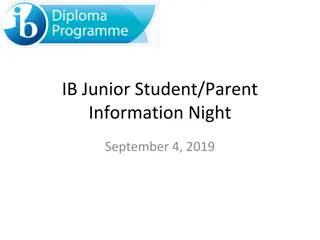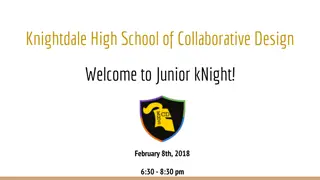Translanguaging Practices of Macau Junior-One Students in Remedial Class
Sociolinguistic insights of Macau residents reveal multilingual practices, with a focus on language use in the education system. A study presented at ISCLD6 examines how junior-one students utilize translanguaging resources in a remedial class, exploring their purposes and linguistic dynamics. Despite varied language policies, students in Macau navigate multiple languages in their educational journey, shedding light on the complexities of language practices in a diverse linguistic environment.
Download Presentation

Please find below an Image/Link to download the presentation.
The content on the website is provided AS IS for your information and personal use only. It may not be sold, licensed, or shared on other websites without obtaining consent from the author.If you encounter any issues during the download, it is possible that the publisher has removed the file from their server.
You are allowed to download the files provided on this website for personal or commercial use, subject to the condition that they are used lawfully. All files are the property of their respective owners.
The content on the website is provided AS IS for your information and personal use only. It may not be sold, licensed, or shared on other websites without obtaining consent from the author.
E N D
Presentation Transcript
Translanguaging Practices of Macau Junior-One Students in a Remedial Class Brian, Hok-Shing, Chan (Department of English, FAH, University of Macau) Chris, Ion-Pang, Chou (Instituto Salesiano, Macau SAR) Paper presented at the 6thInternational Symposium of Chinese Language and Discourse (ISCLD6), December 9, 2022.
Sociolinguistic Background of Macau The majority of Macau residents are bi/multilingual (Census data most people speak Cantonese as usual language and over half of respondents claim to speak Putonghua and/or English as Another Language ). Multilingual practices of Macau people are nonetheless less studied and understood (than people in neighboring Hong Kong where there are many more studies on CS/CM and people apparently engage in language mixing much more frequently). Separate multilingualism (Zhang and Chan, 2017) Multilingual practices of Macau people have been reported in the younger generations (Chan, 2015; various MA theses).
Latest figures from DSEDJ 2021/2022 Language policy in Macau s education system (https://portal.dsedj.gov.mo/webdsejspace/intern et/Inter_main_page.jsp?id=8525) Non-tertiary educational institutions Chinese-medium Portuguese-medium English-medium 100 5 15
Language policy in Macau s education system The numbers hardly represent how languages are actually used as MOI in schools in Macau, because: many Chinese-medium schools also run an English section under the same school name. Putonghua and Cantonese are used to various extents in the CMI schools. Cantonese can be widely used in teaching in an officially EMI school.
A secondary school in Macau Despite being an EMI school, Cantonese has been widely used by teachers in class, including English classes. The chair of the English panel has pushed for an English-only policy. The remedial class has been set up as an extra- curricular activity for those who have problems coping with the regular English classes. Students are free to use whatever language they prefer in communicating in these remedial classes. Students do some collaborative tasks in groups/pairs before they report to the teacher. Research site
(1) How do the students make use of different semiotic resources in their translanguaging practice in a remedial class? Research Questions (2) What are the purposes of the students translanguaging practice in the remedial class?
Nathaniel (14), Marco (14), Joshua (13), Aska (13) They were selected as subjects because they were the most outspoken in the remedial class, while others were largely quiet in the classes. Subjects The second author an observer but not the teacher in this particular class made three audio-recordings in which they communicated among themselves and with others. The second author sought the consent of the teacher of this class and the four students who were a bit surprised but who found the research interesting.
Excerpt 1The teacher (T), Nathaniel (N) and Marco (M) Turn Speaker 1 T: Next one, how to pronounce the word S-A-C-H-E-T? (What is the pronunciation of the word S-A-C-H-E-T?) 2 N: <emphasized the word by reading it aloud>SKETCH 3 T: <pronounced the word>It is sachet /s e / 4 M: <laughed at Nathaniel> ! ! ! (Tsk! You are very weak. You are such a slacker.) 5 N: <replied to Marco seriously> ! (You say that I am such a slacker!) 6 T: <chuckled>Students! Don t argue Focus on your textbook and discuss it with your partner 7 M: <felt irritated>Umm
Excerpt 2Joshua (J) and Aska (A) Turn Speaker 1 A: <chuckled and pointed to the pictures on that page> , , . , (Here are three bags of crisps, and here are two tins of fish that I do not know how to call; they taste bad. There are also two bottles of unidentified things and a dozen salmon sashimi.) 2 J: <chuckled> ? (Does it mean a dozen of salmon sashimi?) 3 A: A dozen [A dozen (It is a dozen.) 4 J: <chuckled> [ ? (Is it a thousand?) 5 A: , . A dozen ? (No. Does a dozen mean a dozen or half a dozen?) 6 J: <spelt the word>D-O-Z-E-N , . (3.0) (D-O-Z-E-N, a dozen) <murmured to himself> (You are a piece of spicy chicken .) 7 A: ? (What does spicy chicken mean?) 8 J: <repeated the words> ! ! (You are a piece of spicy chicken . Rubbish!) 9 A: <showed Joshua an irritated facial expression>
Excerpt 3Nathaniel (N) and Aska (A) (Sentence 1 He makes us happy) Turn Speaker 1 N: <asked Aska> define happy (You can define happy first.) 2 A: <felt confident> happy object. Pattern three , SVOO, ? (I am sure that happy is another object. This is pattern three, SVOO. Is it the answer?) 3 N: <chuckled> , ! (You have made a good try, but the answer is wrong.) 4 A: <felt surprised and said Japanese> (What?) 5 N: . Happy adjective, noun (It is wrong. Happy is an adjective. It is not a noun.) 6 A: <looked at the handout>(3.0) Pattern [fo 7 N: [Pattern four . ? (It is pattern four. So what is happy in this sentence?) 8 A: <read the word>Complement. /k mpl ment/ <wrote the phrase object complement on the answer paper>
Conclusions Translanguaging is more appropriate than code-switching in describing the language practices of the students, who draw upon not only different languages (Cantonese, English, Japanese, Mandarin) but also non-academic registers (trendy expressions, internet slang) and body language (gestures, facial expressions) in the interactions.
Conclusions By translanguaging students assumed multiple roles (as little teachers and peers ) and multiple relationships with other classmates (teacher-student, peer-peer). The choice of language or expressions (e.g. Japanese, internet slang) projects a personal identity/image in relation to the teacher and other students.
Translanguaging also allows the students to project multiple frames to the current interaction (teaching/learning and peer conversation), making the class more entertaining and less stressful. Conclusion
Broader implication As many Macau secondary schools are moving towards an English-only policy at least in English classes or beyond, this small study calls for more reflection and rethinking of implementing English-only education across the board. Also worth rethinking is the presumption that the diversity of MOI practices that has existed in Macau is outdated and undesirable for students and Macau.
Reference Chan, Brian, Hok-Shing & Chou, Chris, Ion-Pang (2022). Translanguaging Practices of Macau Junior-One Students in a Remedial Class. Asian-Pacific Journal of Second and Foreign Language Education 7, 37. https://doi.org/10.1186/s40862-022-00164-3 [Springer - ESCI/Scopus-indexed]. Open-access article available on the Journal website, my ResearchGate page and UM Scholar page.























